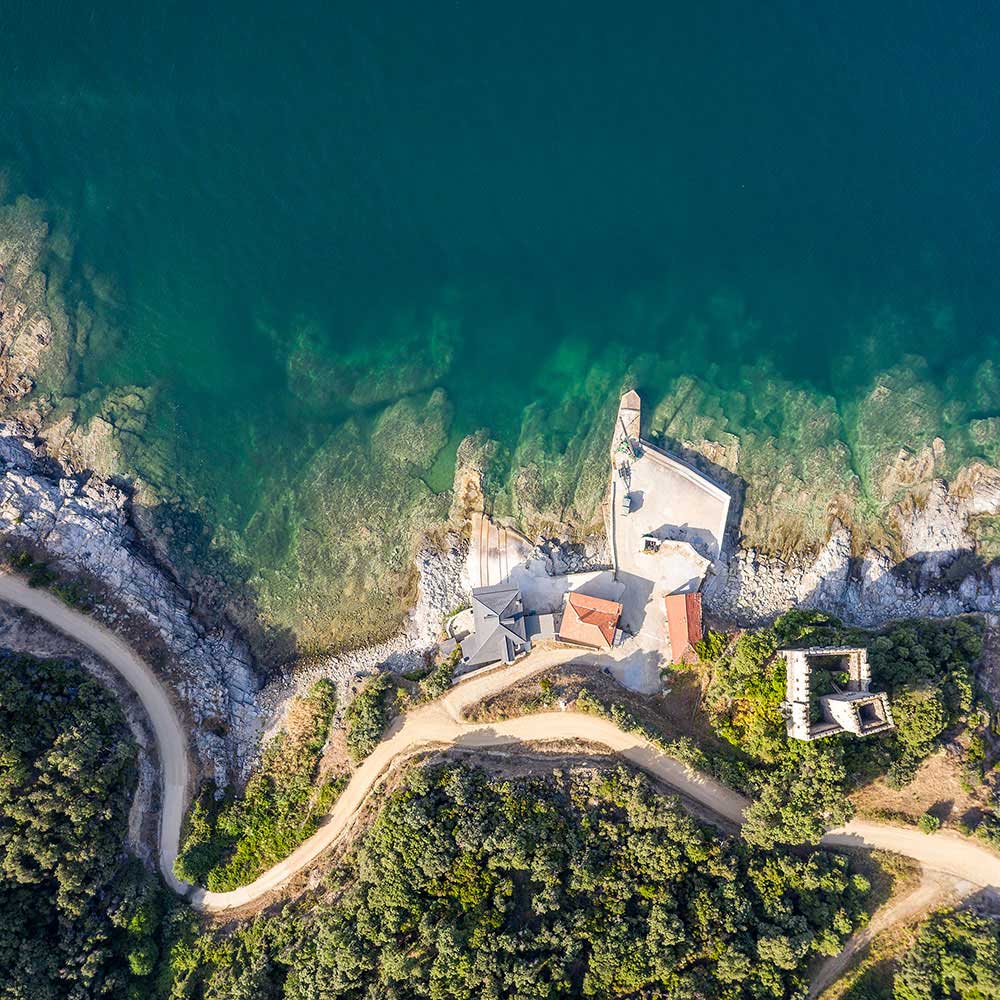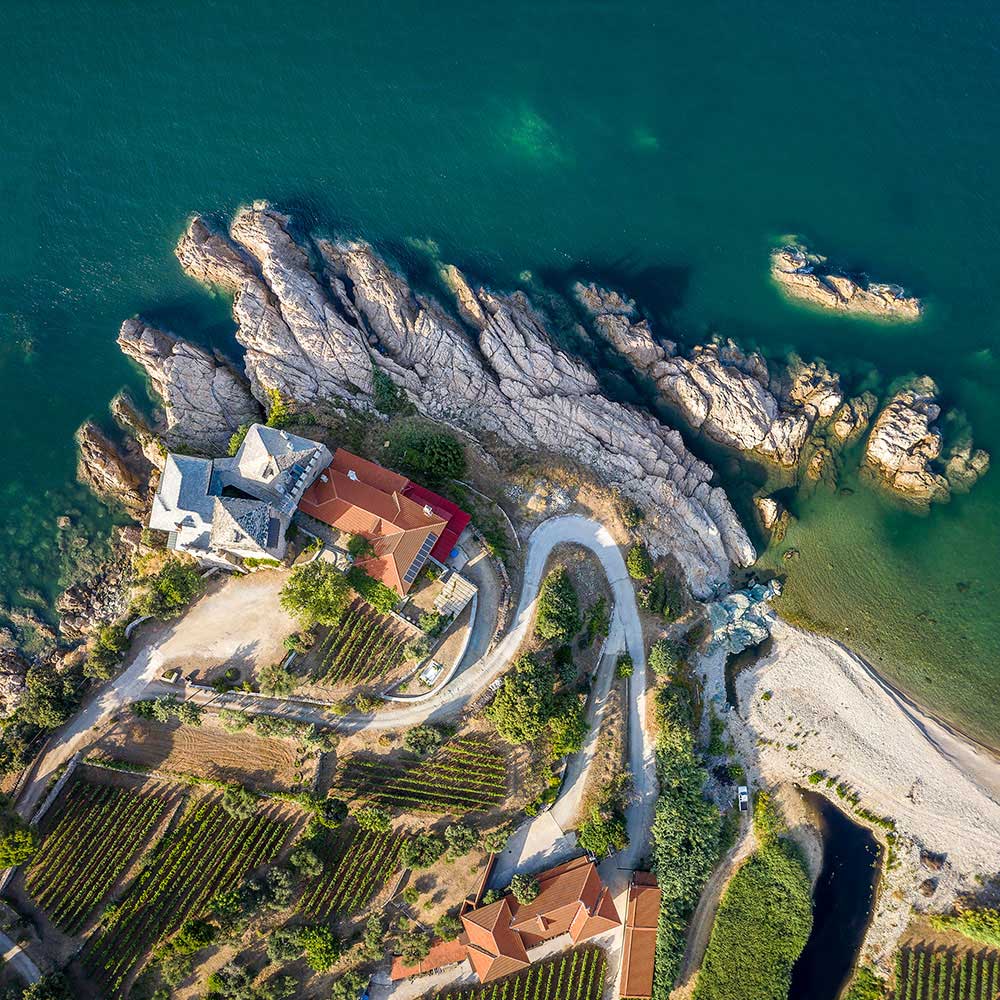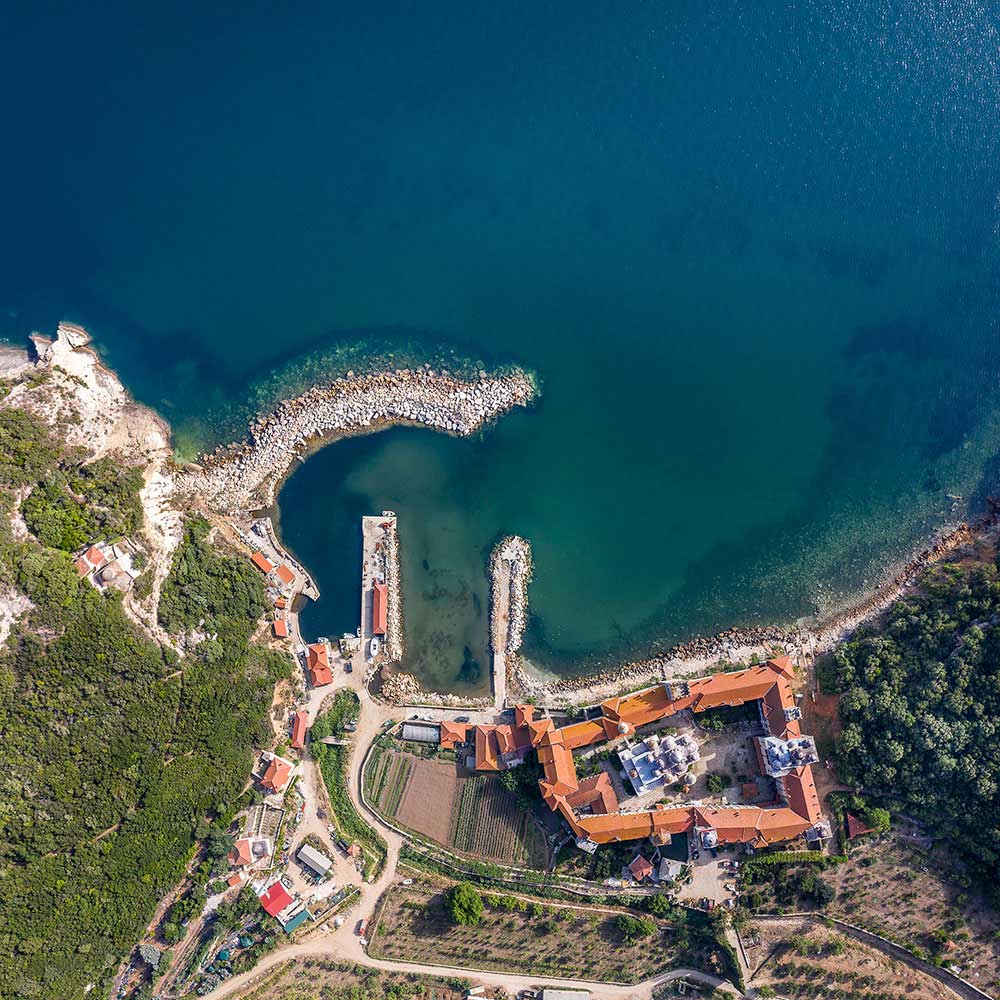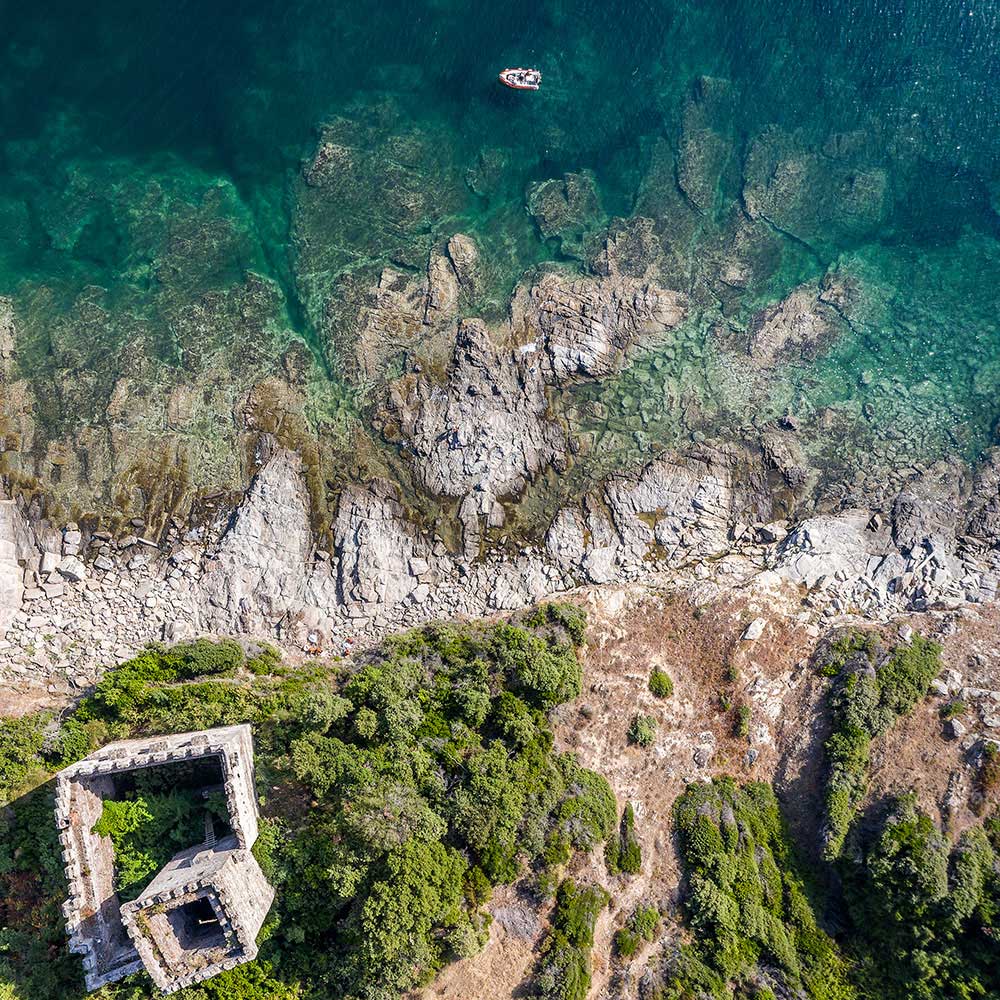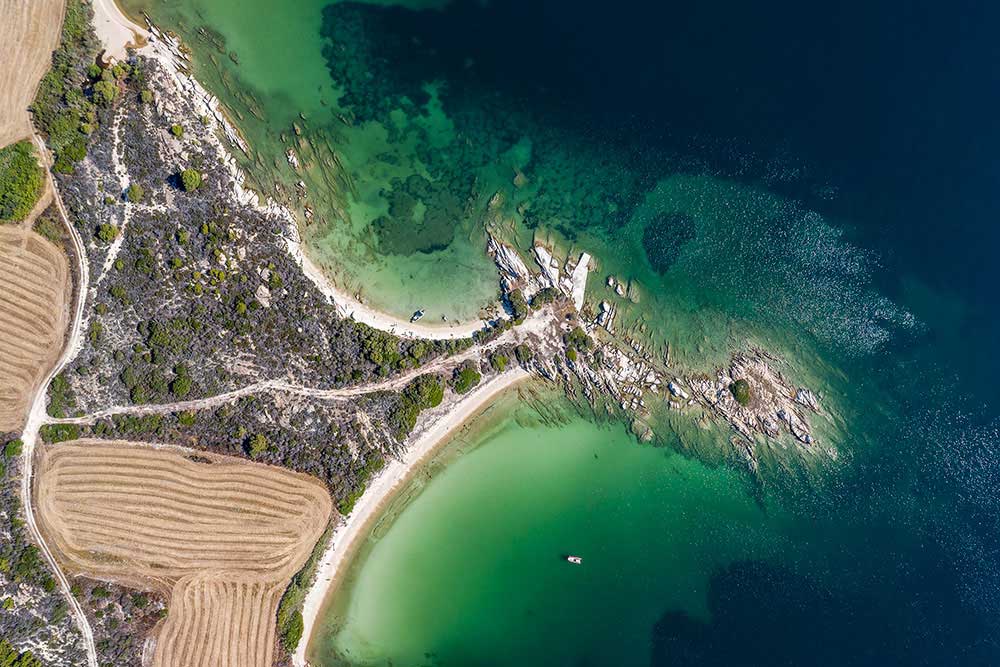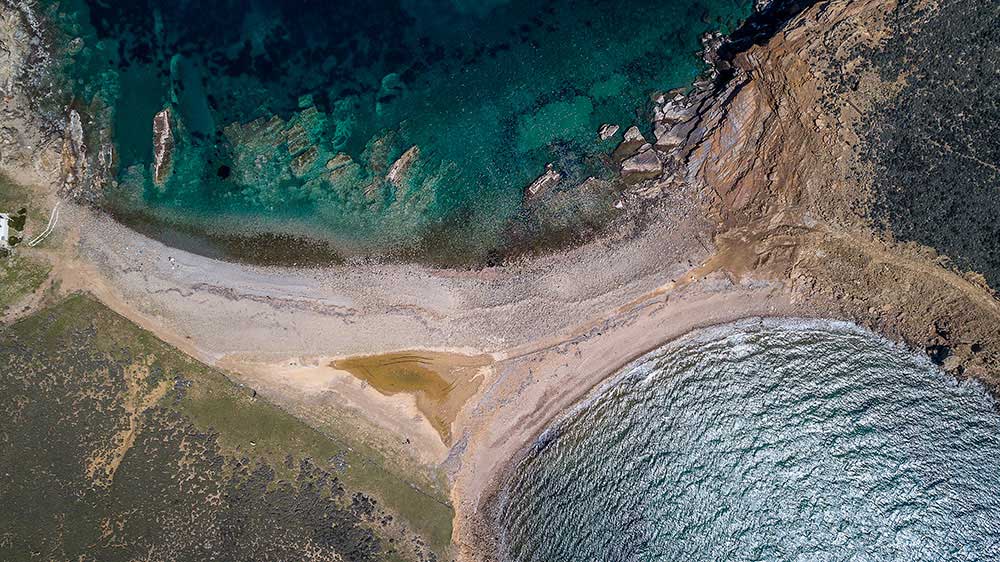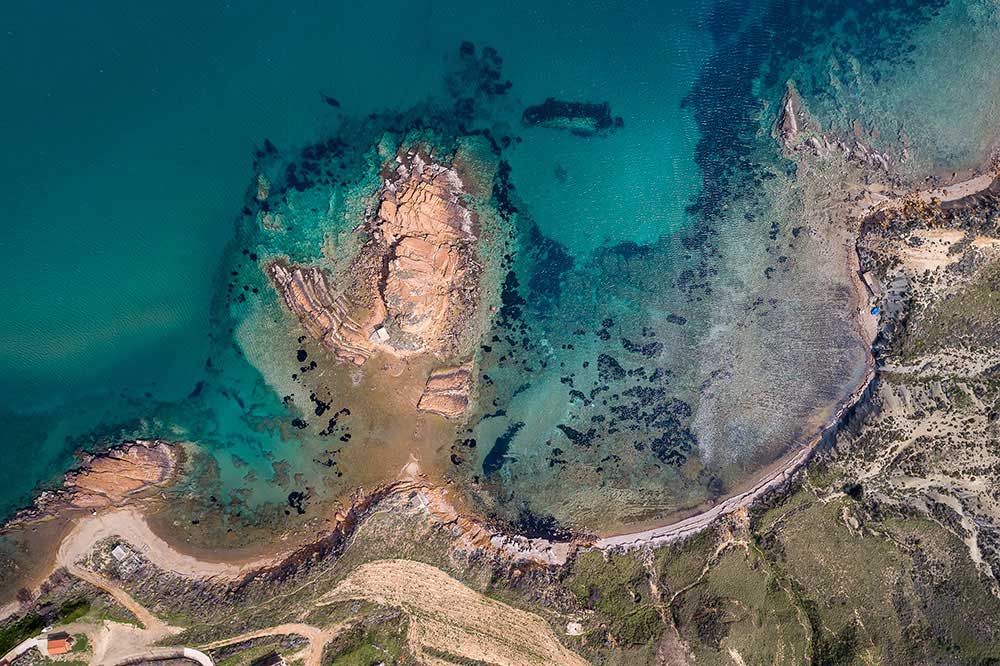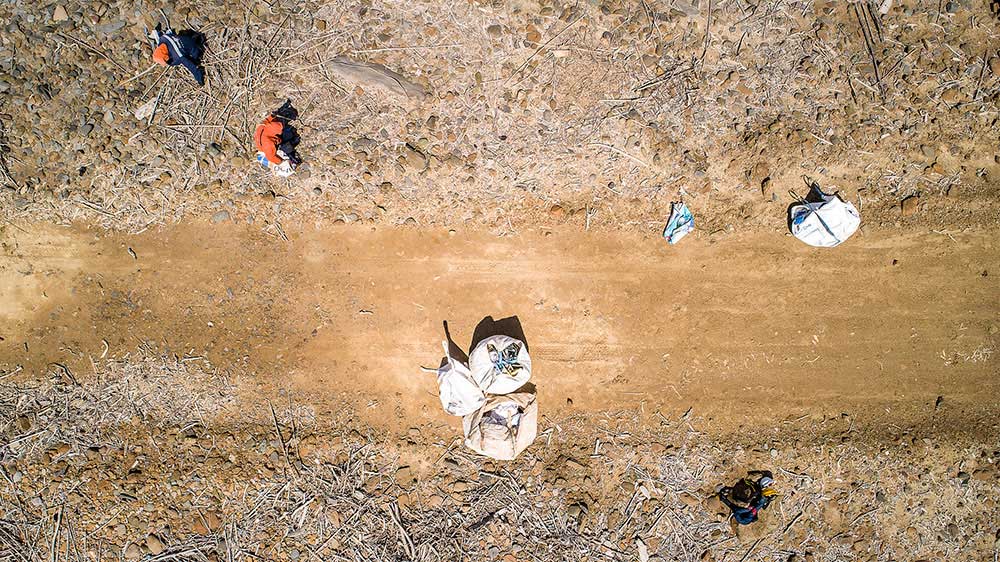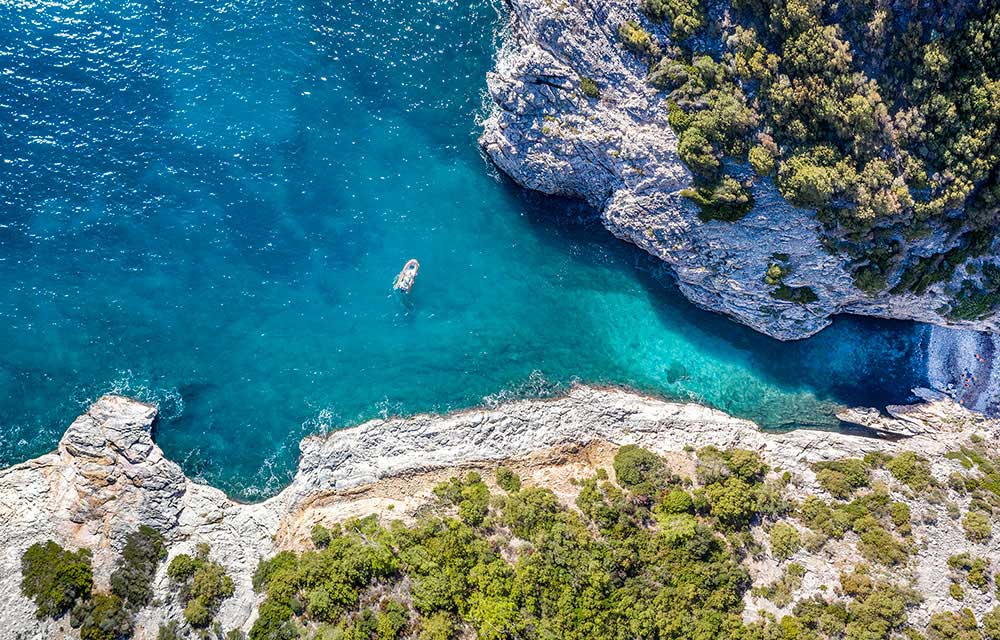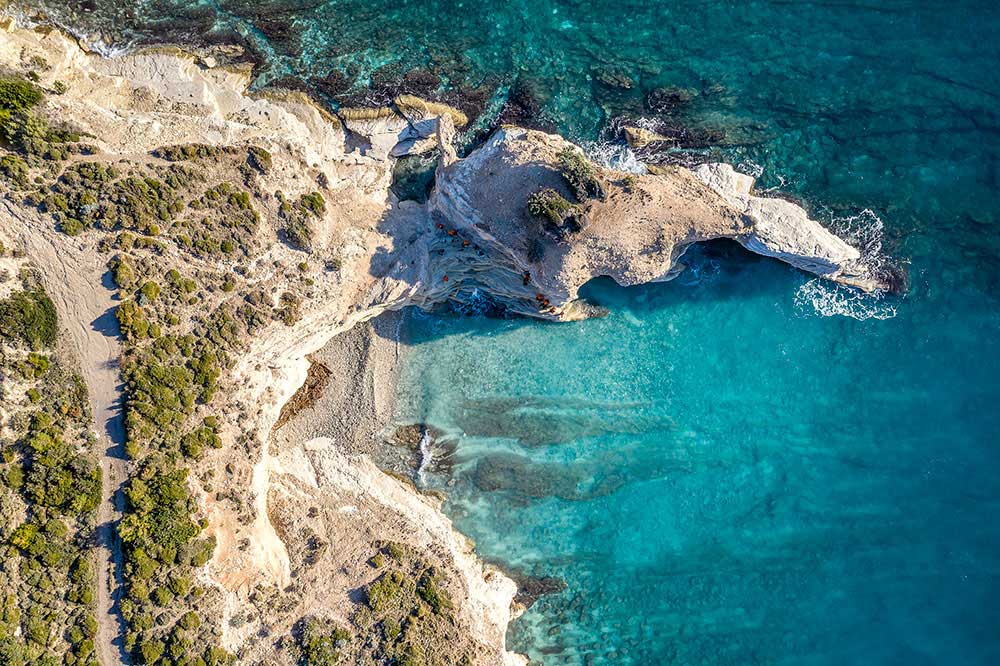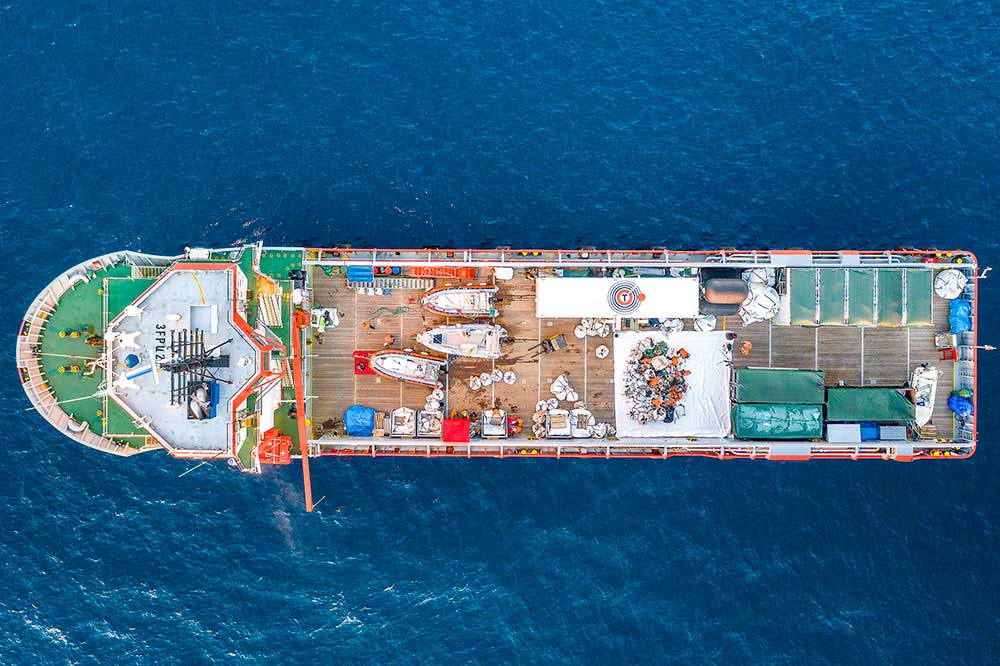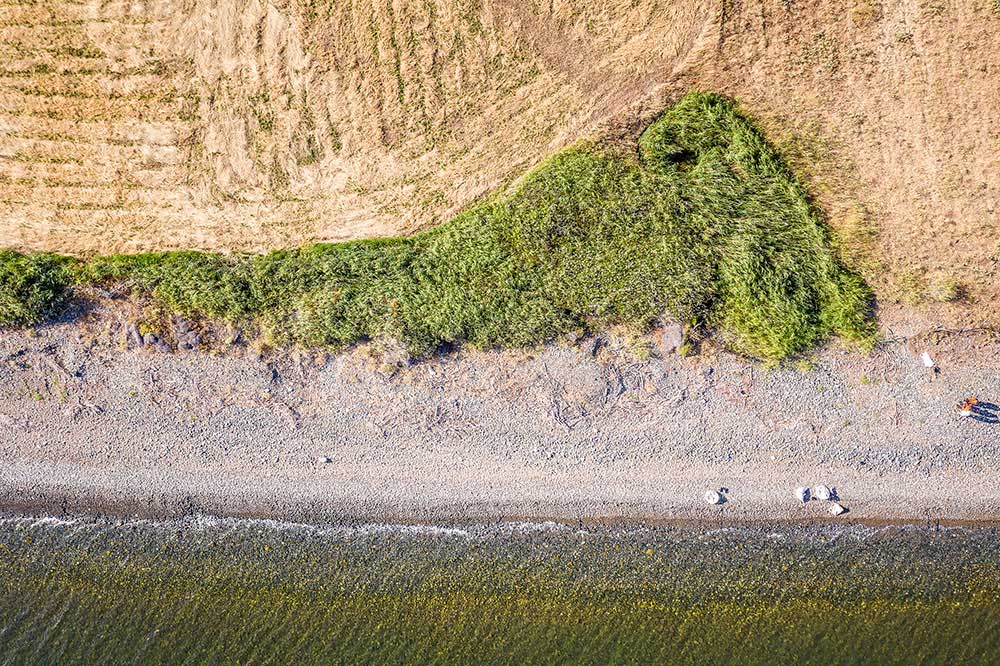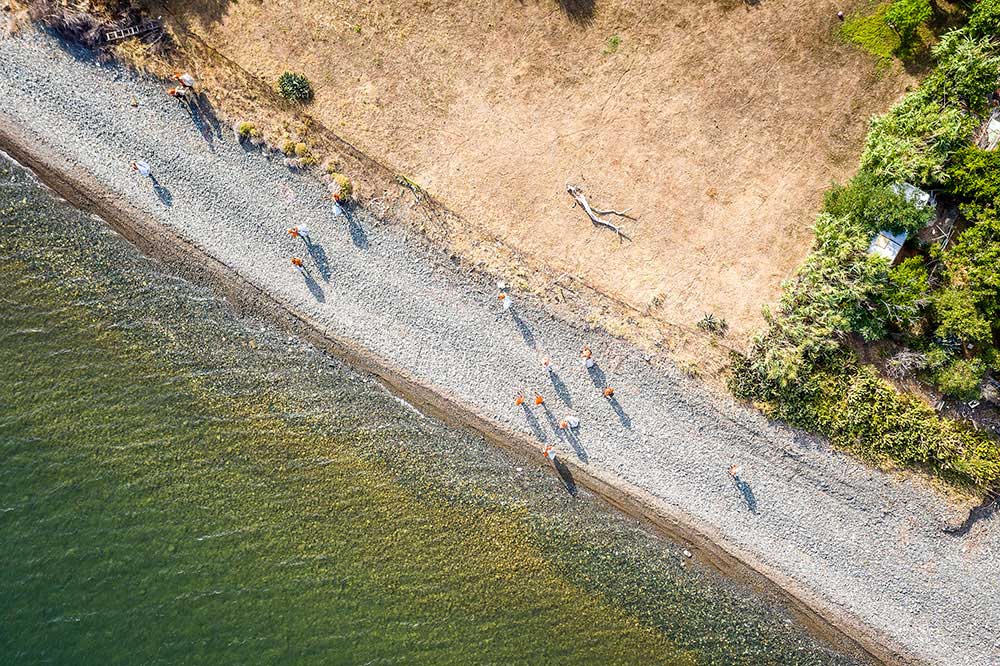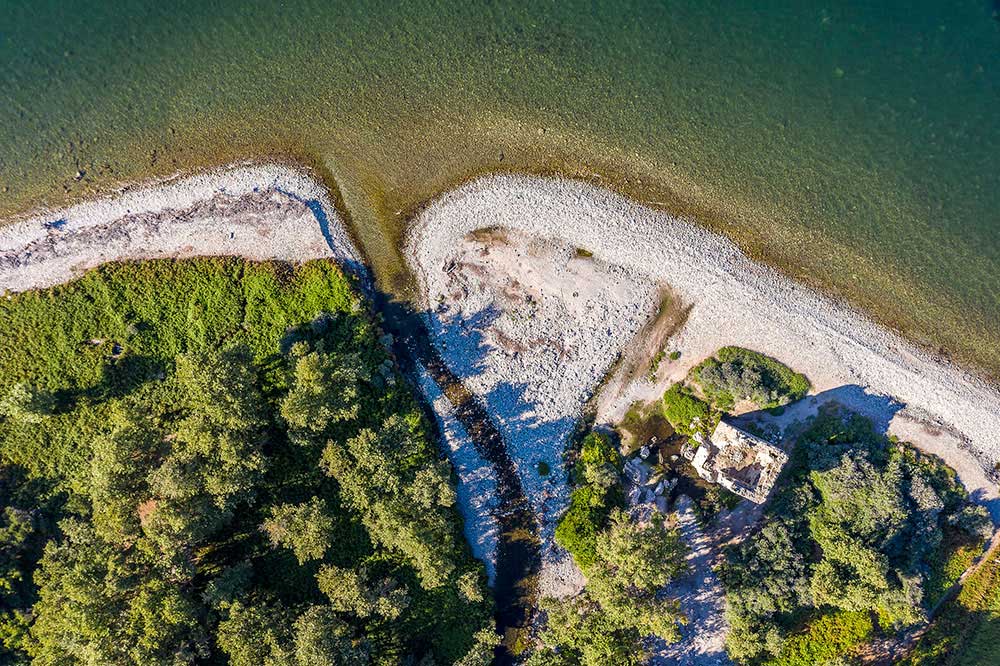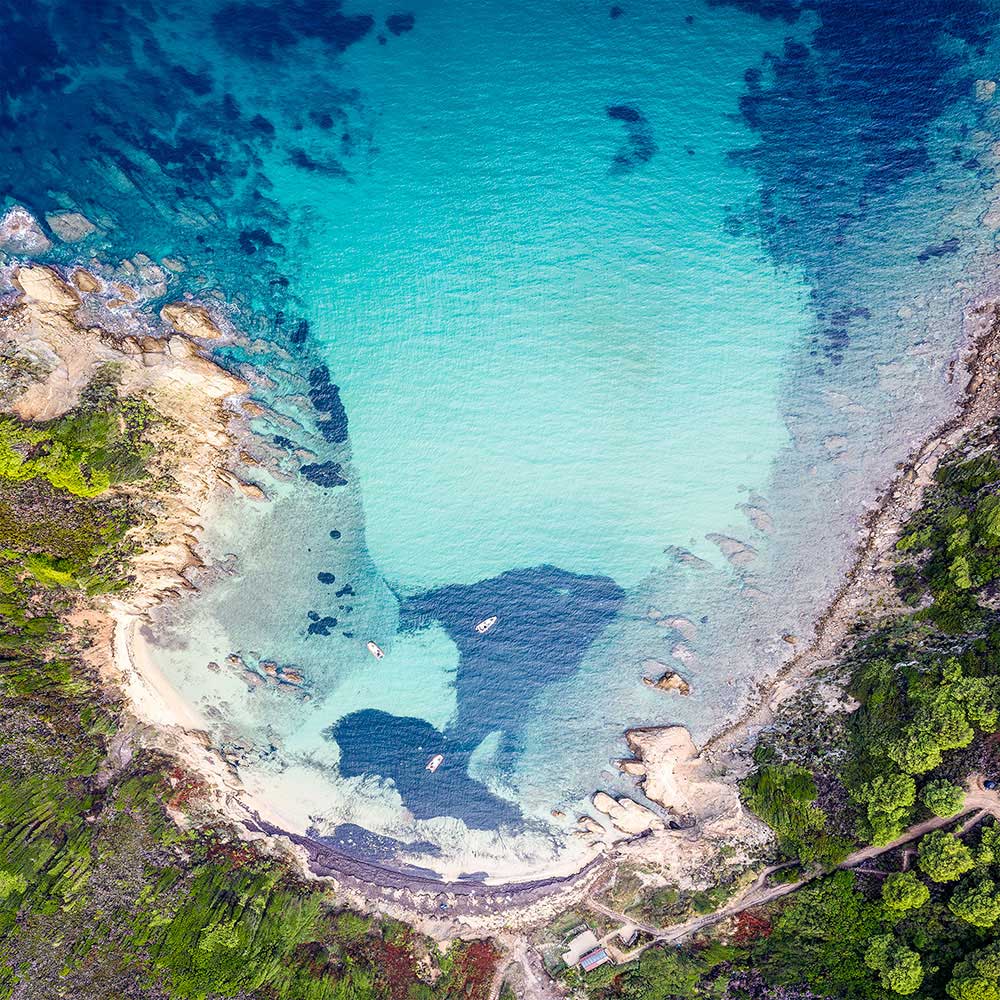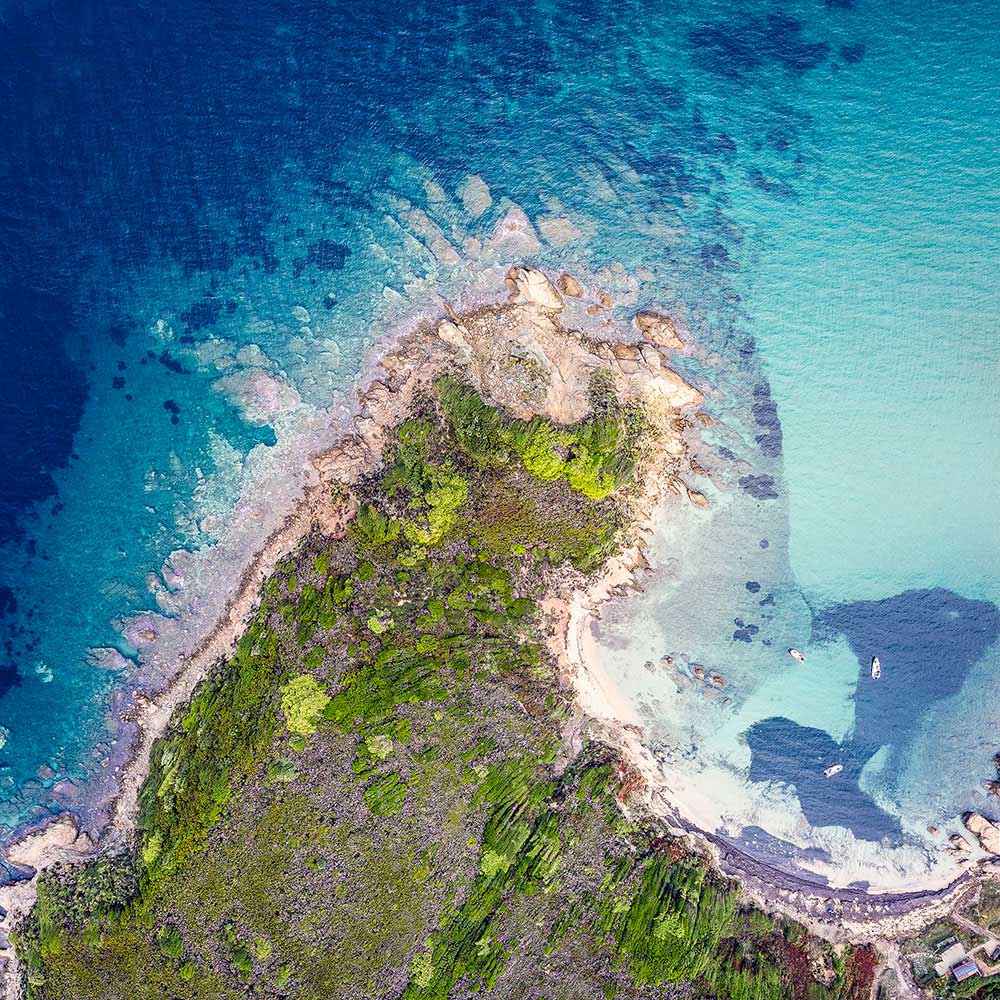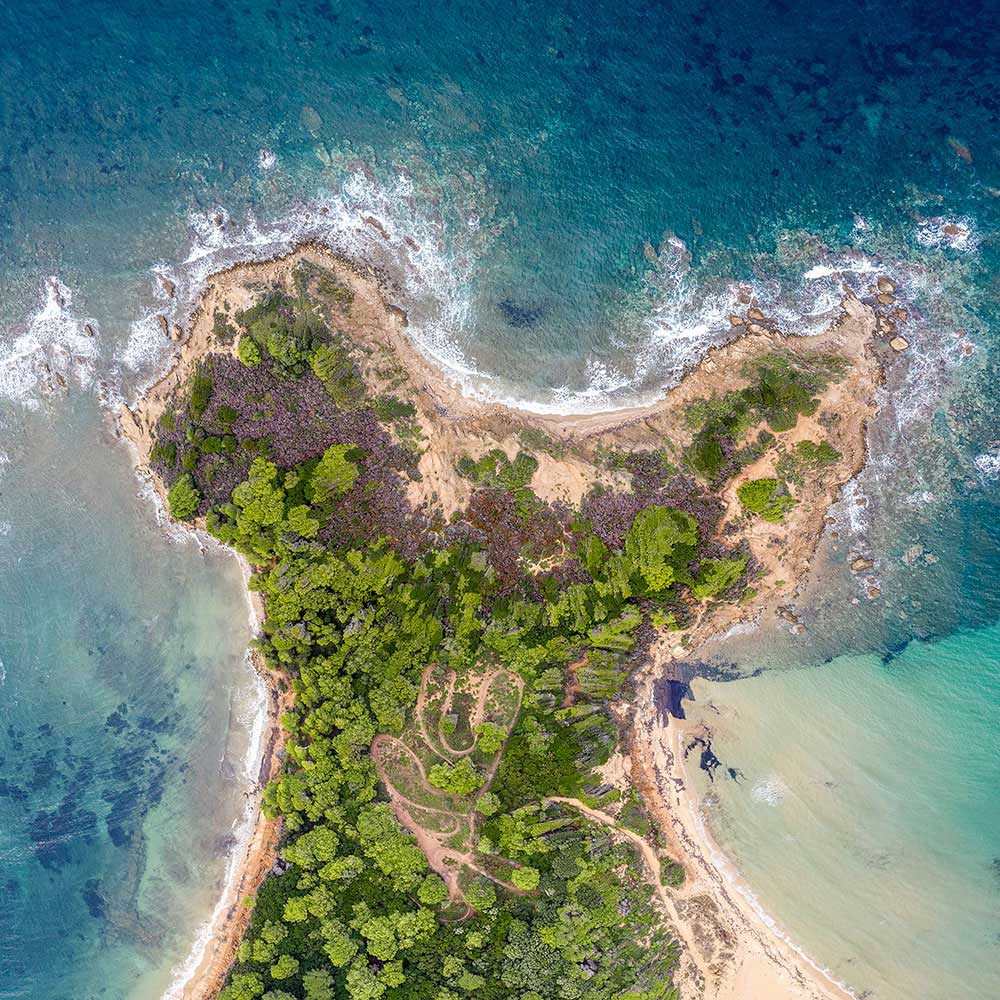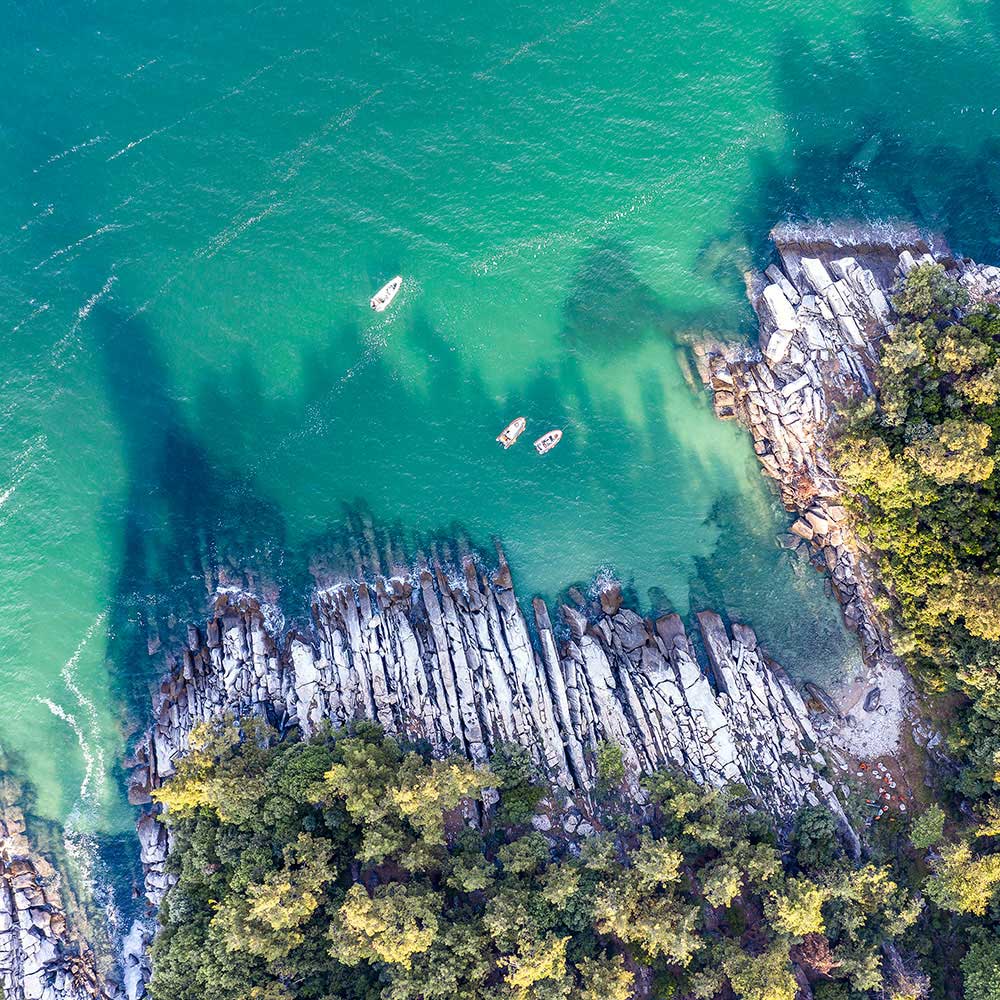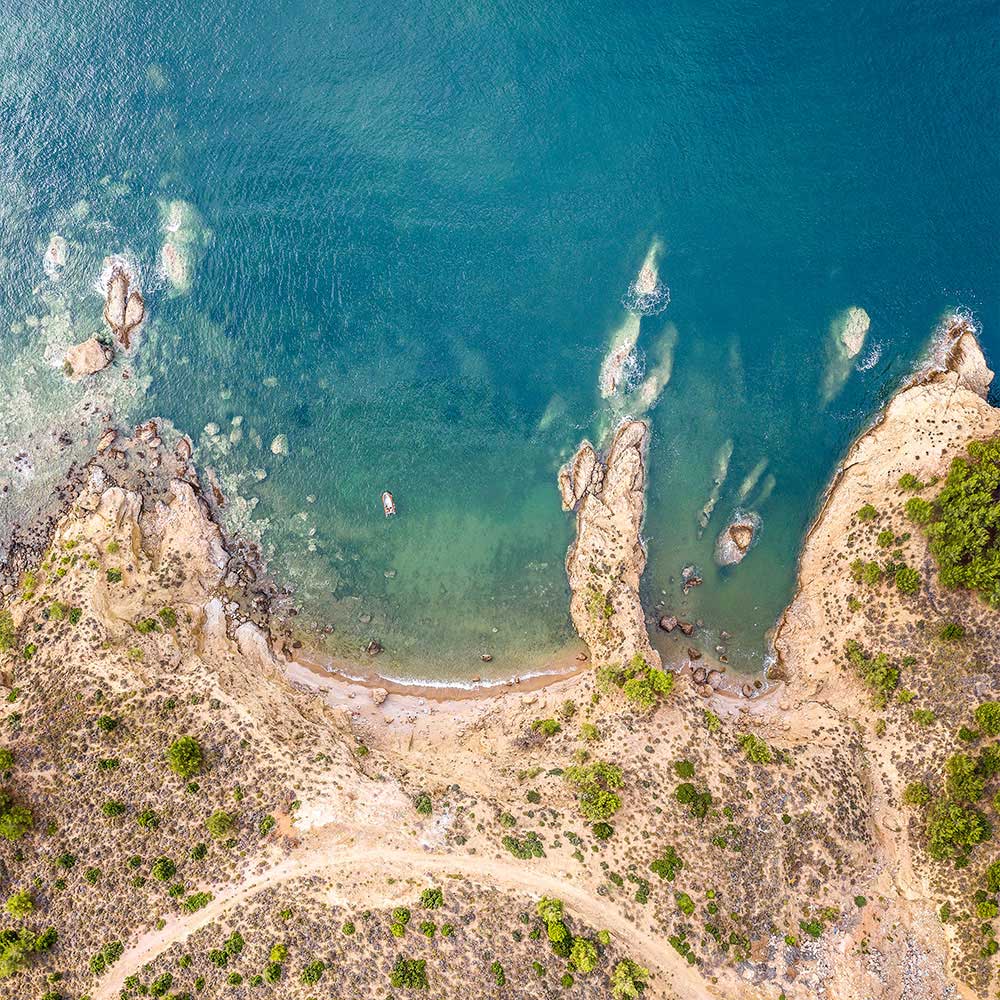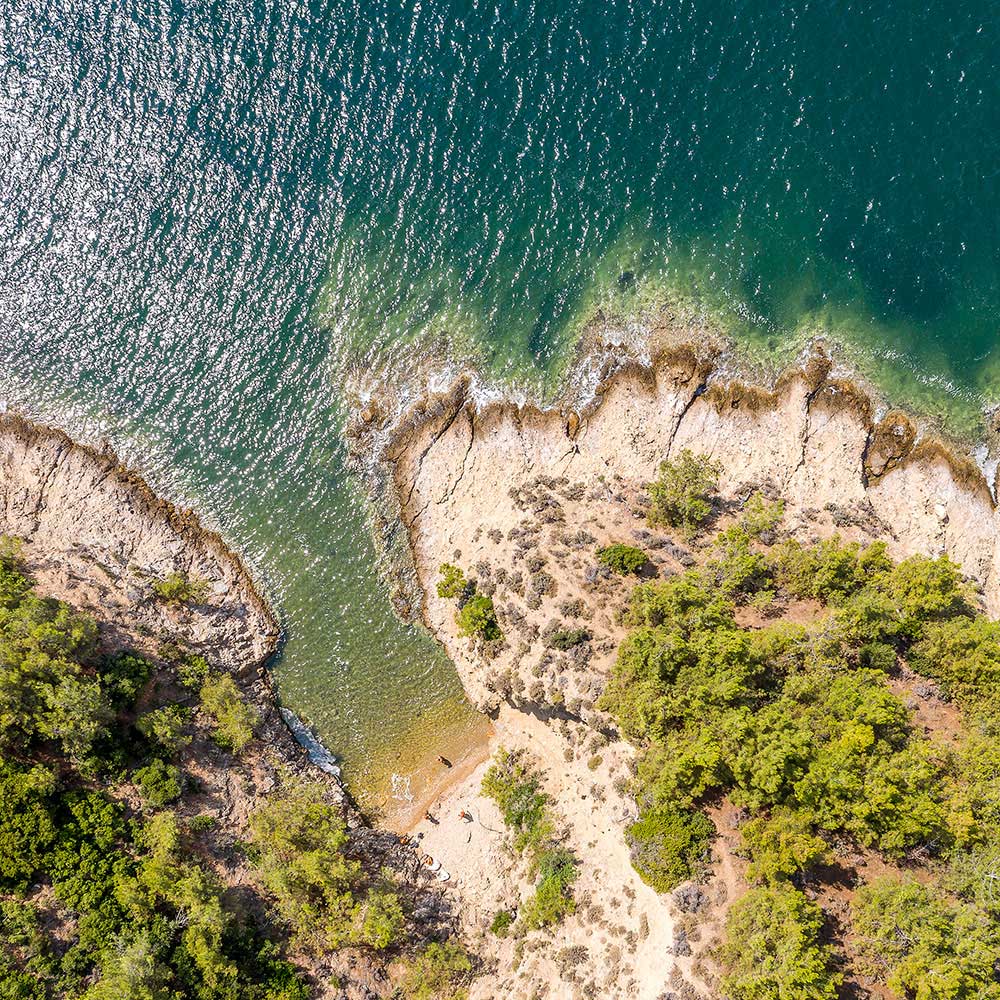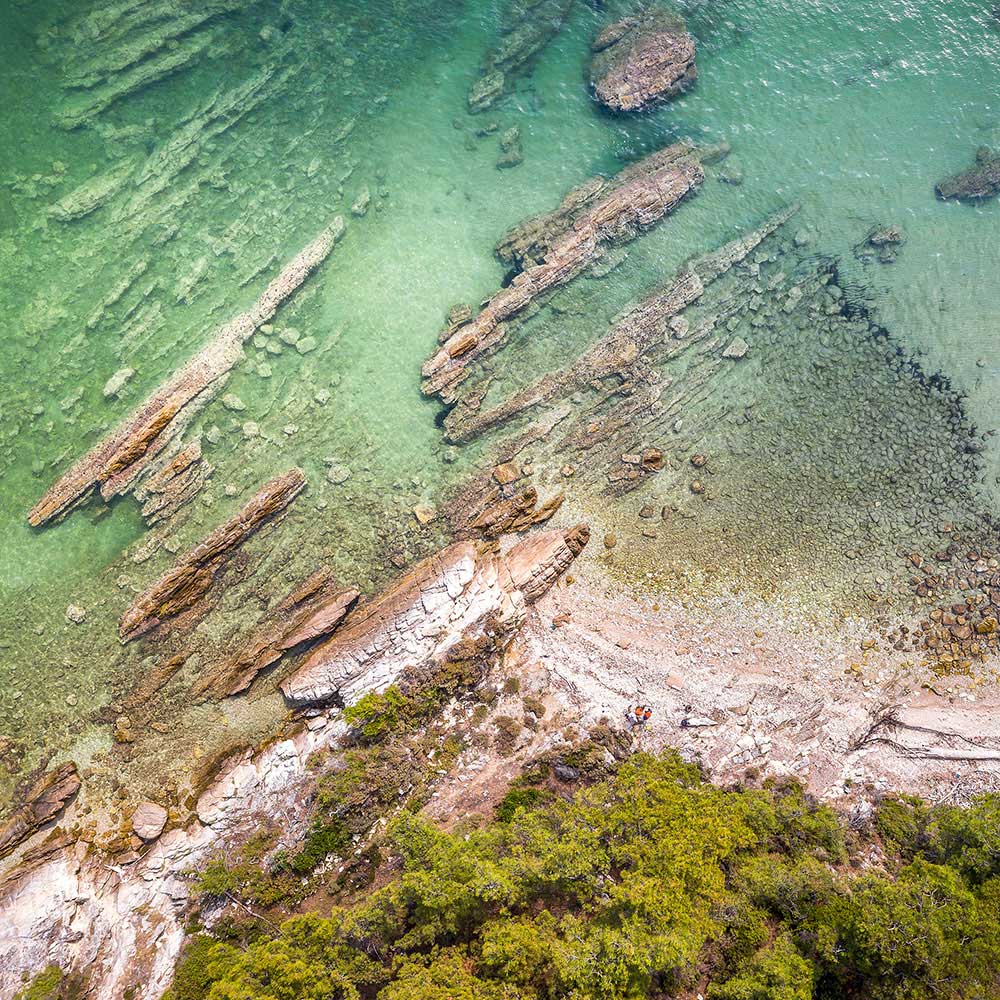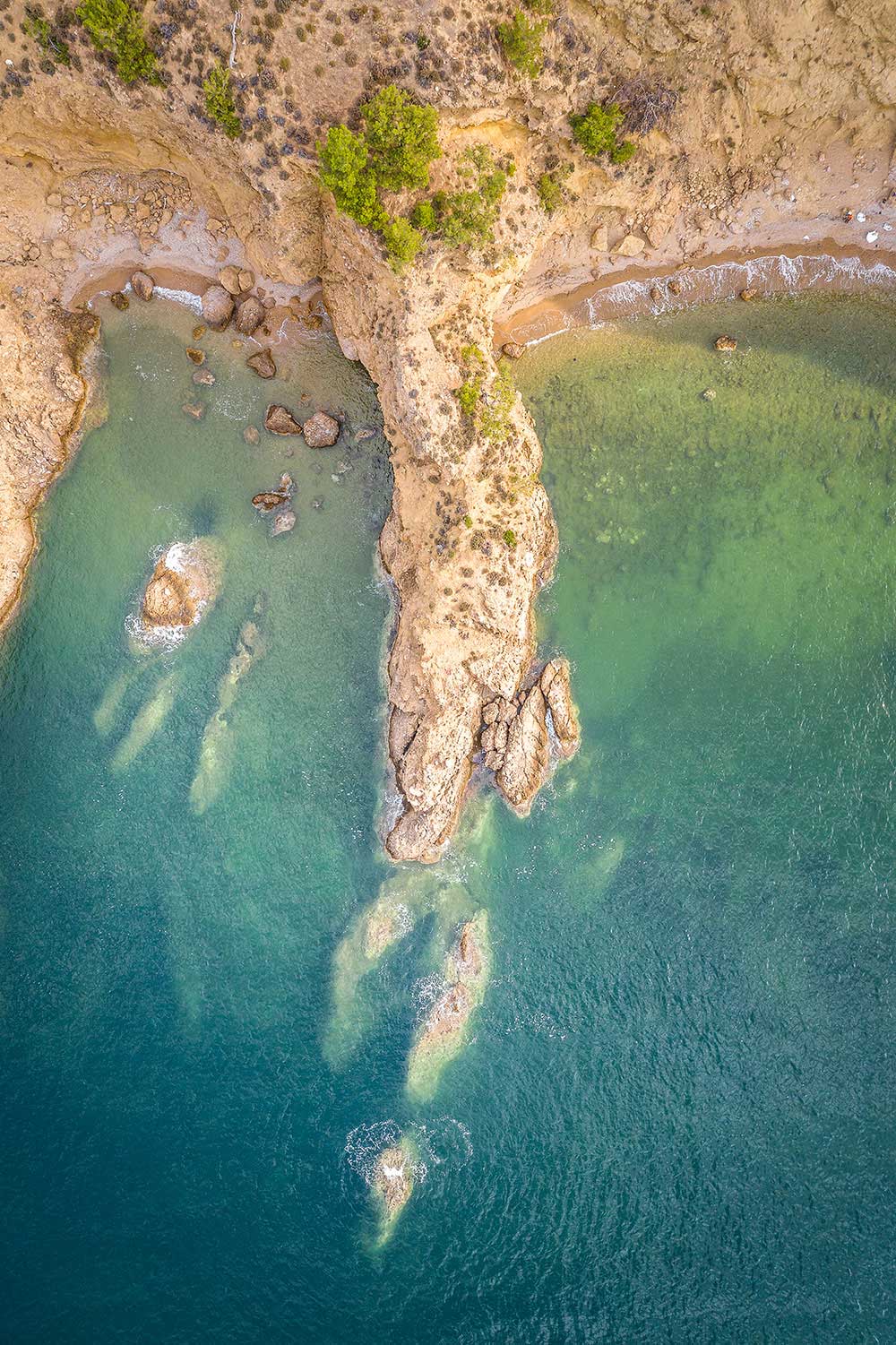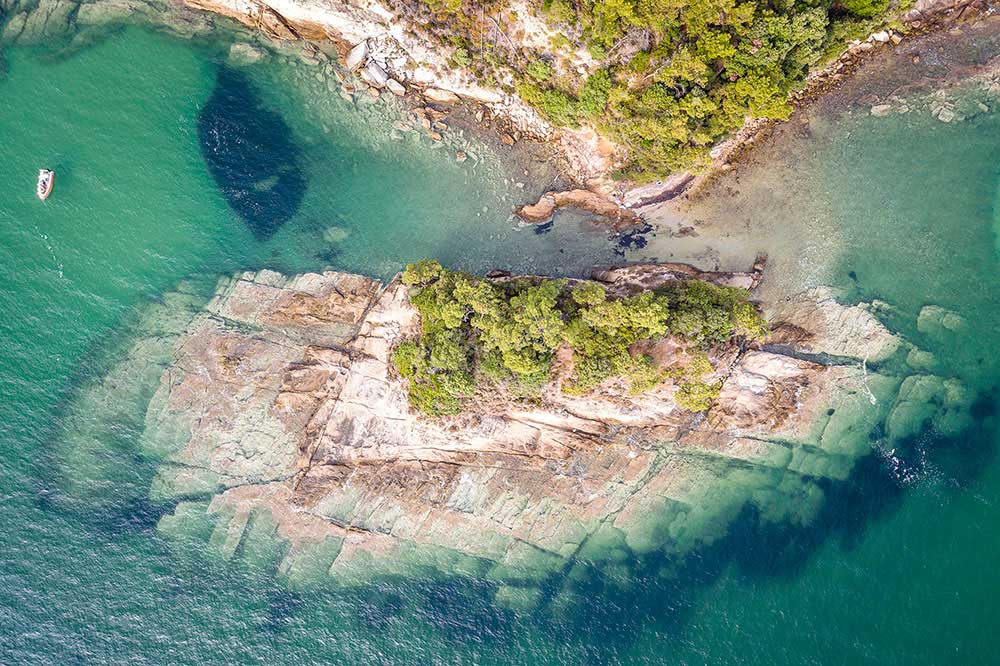The Typhoon is the only vessel in the Mediterranean with the sole purpose to clean up the most inaccessible Greek coast lines, which has become, unfortunately, in some places a waste concentration.
This initiative is within the A.C. Laskaridis Charitable Foundation “Project Typhoon”, an important and indeed ambitious initiative for the maritime environment and its maintenance.
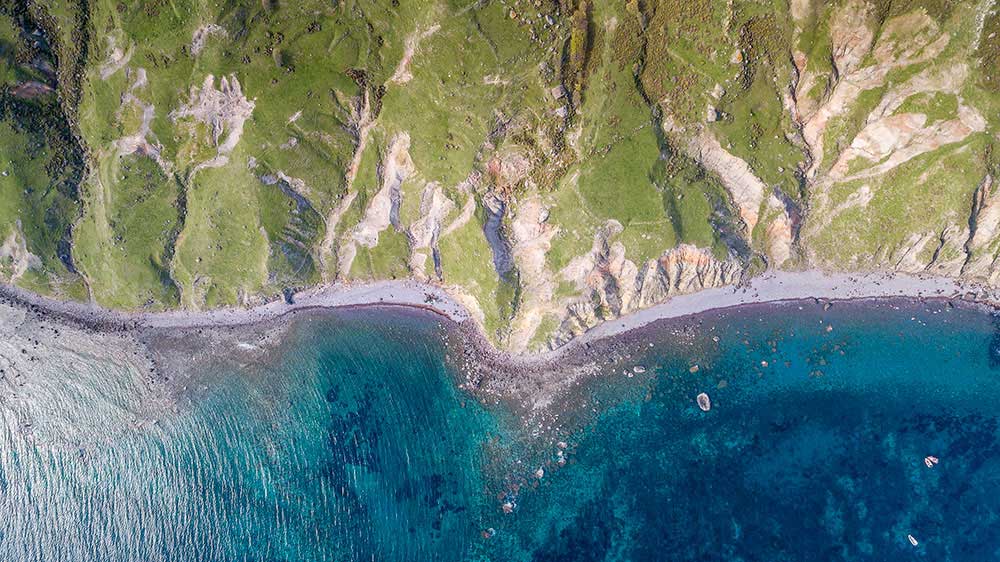
Typhoon operates in the Greek waters as the catalyst for the protection of the environment from pollution and fulfills the scope for the mega vision and mission set by the Foundation’s founder; to contribute with determination in the clean-up of Greece’s coast lines as well as that of its thousand islands – small and big ones, from any type of pollutants.”
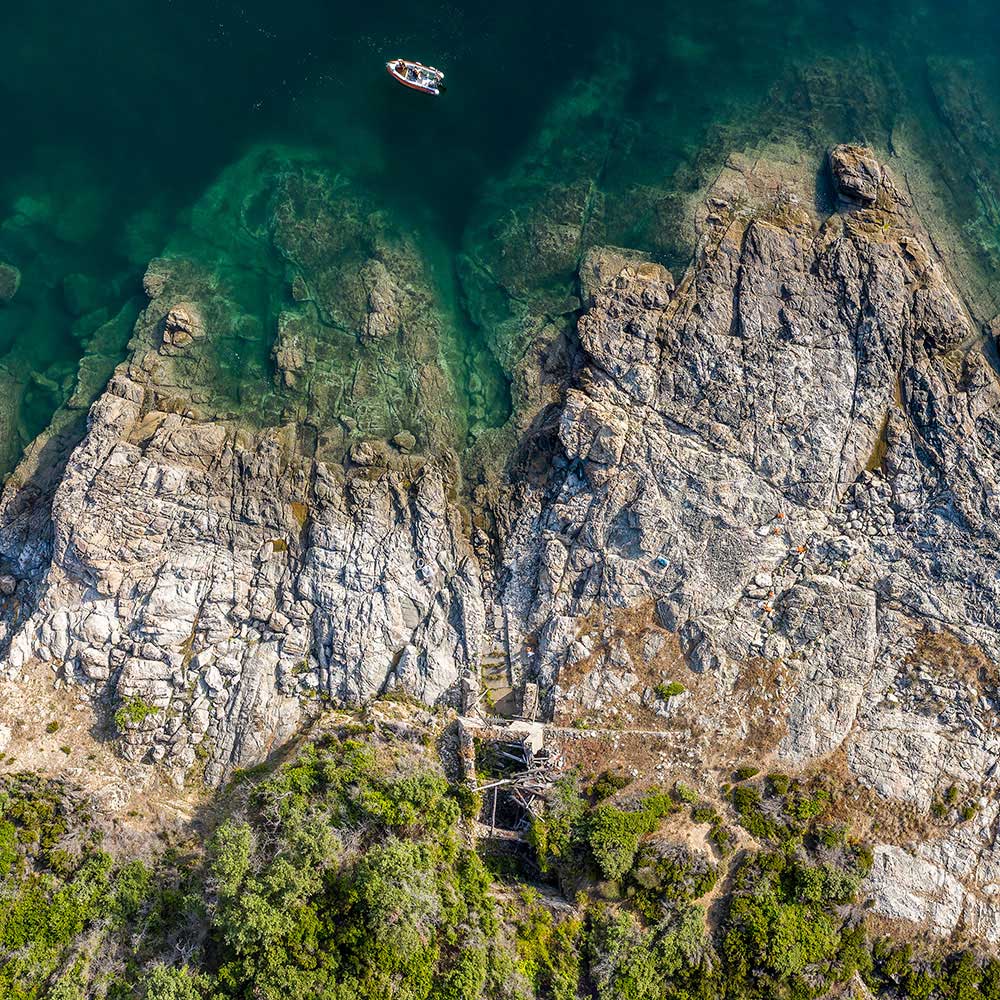
Photographic documentation
Pygmalion Karatzas Photography was selected by the A.C. Laskaridis Charitable Foundation to document the Typhoon Project is various locations.
Between April and December 2021 seven expeditions were conducted:
April 2021: Lymnos island.
April 2021: Agios Efstratios island.
July 2021: Samothraki island.
July 2021: Thasos island.
August 2021: Mont Athos peninsula.
October 2021: Skiathos island.
December 2021: Samos island.
Following the crew’s schedule and living onboard the Typhoon vessel, the visited shorelines were photographed during the cleaning operations. The daily schedule consists of two shifts – morning and afternoon – with an intense routine to maximise the available time, given the heavy-duty conditions of cranes lifting the zodiacs, carrying various equipment and difficulties approaching beaches due to terrain and weather while maintaining safety protocols. Emphasis is given to remote locations difficult to approach by land, for which 3 zodiac type boats along with a crew of approximately 20 people collect litter to be taken onboard the vessel for separation and storage management before their final recycling destination in specialised processing facilities on land. The coordinates, shoreline mileage, weight and type of garbage are recorded as well as the before and after condition of the beach.
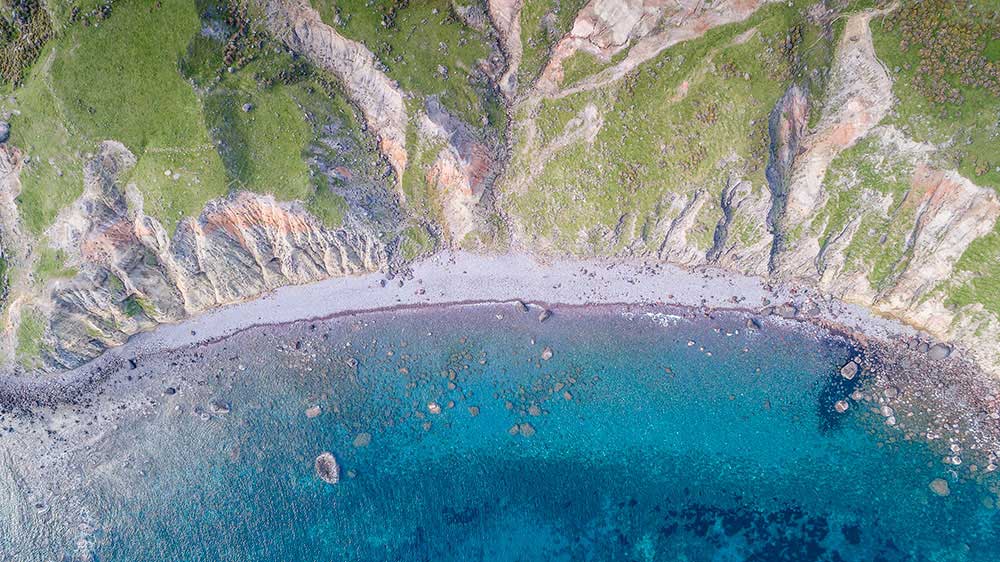
The photographic approach was a multi-perspectival one, using various types of photography to provide a comprehensive coverage, include and portray multiple perception modes. Reportage was used to capture the actions of the crew in closeups to emphasise the work and in wider frames to also present the scale of the landscapes in candid moments. Panoramic images take this farther with stitched images that open the vistas and the human element becomes less dominant, allowing the locations to become the main subject. Long exposure photography with neutral density filters was used when appropriate. This effect adds an extra layer to the passage of time and strips the scene from distractions towards more fine art representations. Drone photography was also used to capture aerial images of the extended locations and broaden the scale even farther. Extra attention was given to planar aerial images that are a product of a more meticulous and intuitive investigation of the terrain. Such images looking straight down from different heights capture the scope of the operations in various scales, while at the same time bring out the formalistic elements of the surrounding environment. They also ended up providing a subliminal connection across the variety of visited locations, creating a series of images that can stand alone as iconic pieces. This multi-perspectival approaches has lastly accompanied with videography using footage shot in real time and in time-lapse and hyper-lapse passage of time.
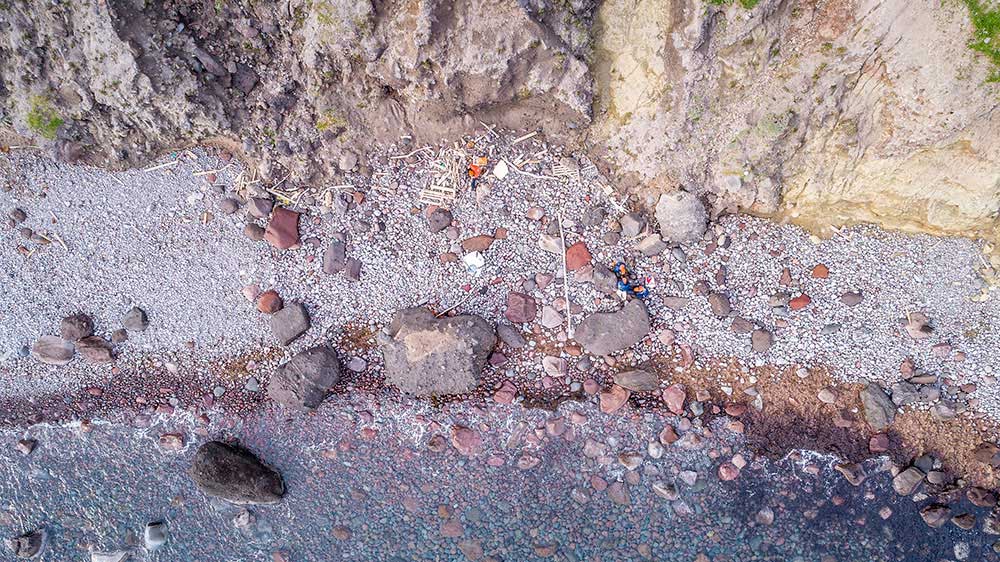
Selected images and a video edit from this project participated in the International Photography Awards 2021, a leading annual professional competition. A stellar international jury of renowned photography experts judged nearly 14.000 entries from 120 countries around the world. The project received the 1st place in the category Special – Travel / Wanderlust, one honorable mention in the category Fine Art – Landscapes and one honorable mention in the category Still in Motion / Video, Editorial.
The motto “Think global, act local” has become the central mentality of environmental activism around the world for decades now, which keeps reminding us to retain both the micro and the macro perspectives at the same time.
We typically associate these remote landscapes in a perpetual pristine condition, yet we are becoming increasingly aware of the far reaches of pollution albeit not in our immediate eyesight. These images coupled with the statistics of their cleaning operations, brings us to a similar dissonance. Their macro perspective holds true to their innate beauty while their micro perspective reveals the impact of our bad habits or inadequate waste management, hopefully bringing us closer to facing our environmental cognitive dissonance.
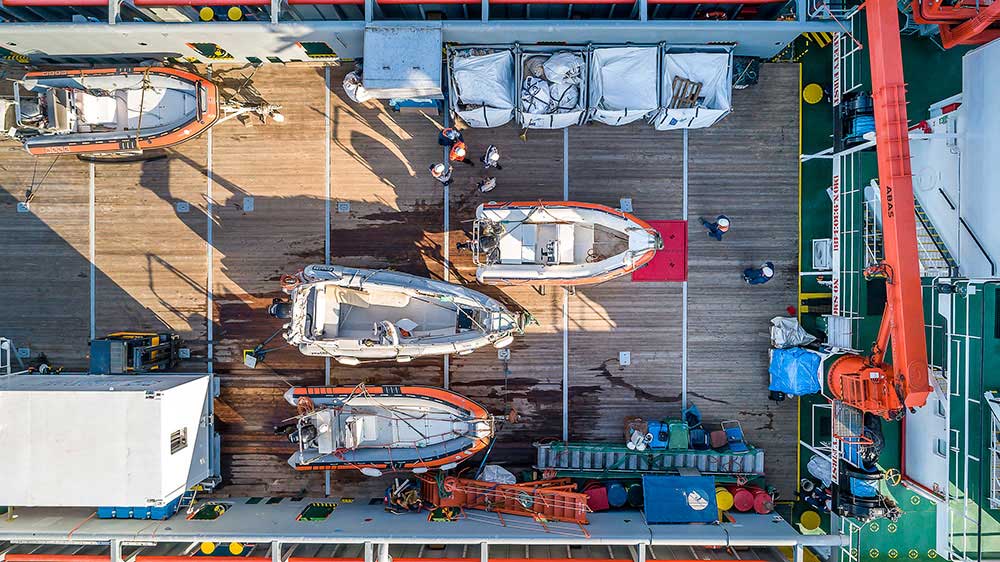
Statistics from the operations and locations
Lymnos island:
The Typhoon stayed in the island for 122 days and cleaned 206 beaches. It covered 94.529 meters of shoreline and removed more than 57 tones of garbage, in their majority plastic.
Agios Efstratios island:
The Typhoon stayed in the island for 14 days and cleaned 22 beaches. The crew covered 4.574 meters of shoreline and removed 14,5 tones of garbage.
Samothraki island:
The Typhoon stayed in the island for 6 days and cleaned 10 beaches. It covered 8.531 meters of shoreline and removed more than 2,5 tones of garbage, in their majority plastic and fishing material.
Thasos island:
The Typhoon stayed in the island for 7 days and cleaned 22 beaches. It covered 3.215 meters of shoreline and removed more than 1,4 tones of garbage, in their majority plastic and styrofoam.
Mont Athos peninsula:
The Typhoon stayed in the peninsula for 74 days and cleaned 117 beaches. It covered 34.177 meters of shoreline and removed more than 37 tones of garbage, in their majority plastic and styrofoam..
Skiathos island:
The Typhoon stayed in the island for 16 days and cleaned 35 beaches. It covered 7.521 meters of shoreline and removed more than 3,9 tones of garbage, in their majority plastic and styrofoam.
Skiathos island:
The Typhoon stayed in the island for 9 days and cleaned 50 beaches. It covered 3.570 meters of shoreline and removed more than 5 tones of garbage, in their majority plastic and styrofoam.
Acknowledgements
I extend my gratitude to program coordinator Peggy Xirotagarou for the excellent collaboration during these twelve months. I thank the founder Mr. Athanasios C. Laskaridis and the Board of Directors of the foundation for entrusting me with this complex project and for giving the opportunity to experience first hand this unique preservation initiative of the valuable Greek shoreline. I would also like to thank Typhoon Project coordinators Michalis Prevenios and Haris Pontikas, the whole crew of the vessel for assisting with the assignment, the Secretariat of Athos Holy Community for allowing us to document this project at Mont Athos peninsula, drone operators Christos Kodellas, Giorgos Strickler and Gerasimos Michalopoulos for supporting the overall vision under difficult shooting conditions. Last but not least professor George Papatheodorou for his continuous support of my work and graphic designer Nandia Katsikerou for the collaboration on the book.
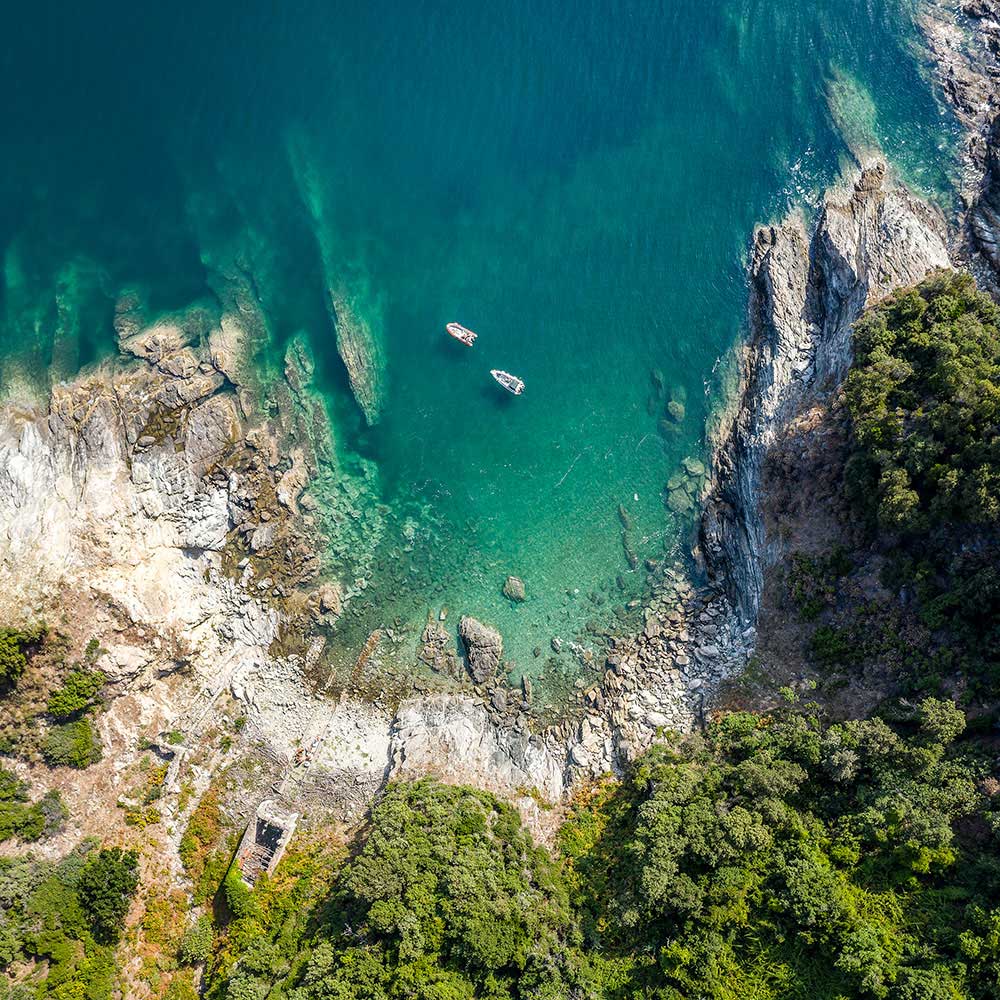
Collaborators
Drone collaborator (Lymnos & Agios Efstratios): Christos Kodellas / Xtreme Camera Production.
Drone collaborator (Samothraki, Thasos, Skiathos, Samos): Gerasimos Michalopoulos.
Drone collaborator (Mont Athos): Giorgos Strickler and Gerasimos Michalopoulos.
